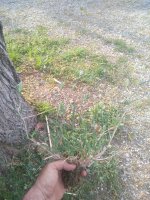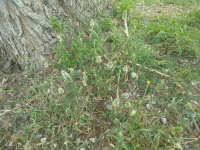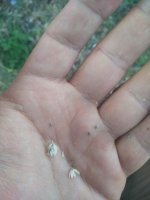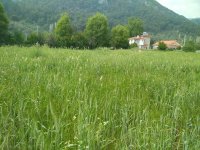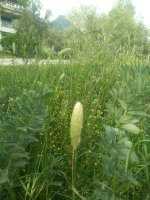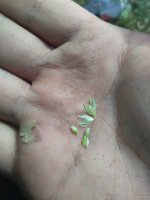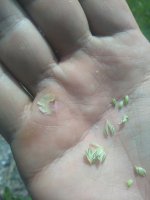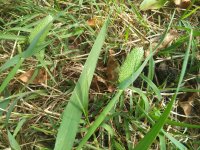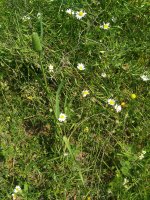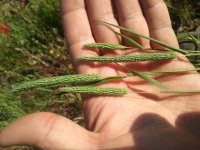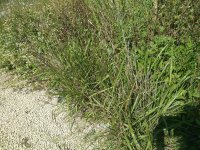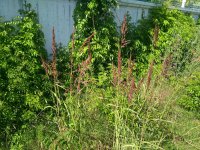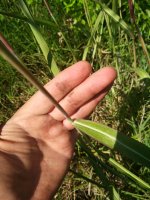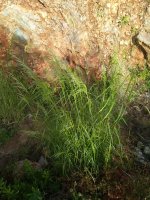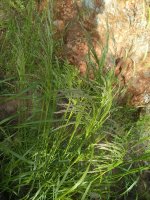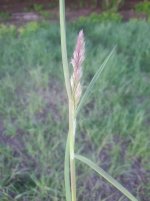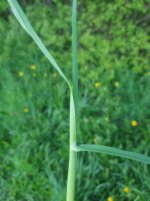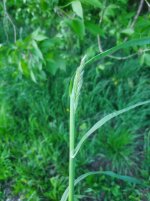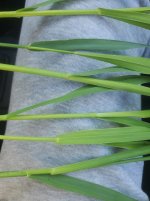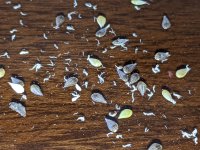Thanks Chimp z.
I am going to boil the fresh leaves now, which added up to over 100g. Somehow I felt adding the Flowerheads might make sense (any info on that?), and they weighed around 50g. I am expecting that in the worst case, this makes one dose. A few doses if I am more lucky.
Thanks for the tip on cloning. As far as I understand, what are called rhizomes with phalaris are not underground structures like they are with pragmites. It's more like the base of the stalk?
Jagube had told me that P. aquatica has relatively less genetic variation and is usually reliable in providing light. He has tried aq1 which is said to be almost purely dmt in alkaloid profile, with intriguing results. I am open to any possible medicinal effect of the total synergies of more complex alkaloid content... Let's see. This is exciting.
And that every strain and species will have a different spirit... It's a whole universe to discover and study. Feels very good to be on this quest...
As my friends from the ayahuasca forum have heard from me, I am allied to a specific strain of Syrian rue. Very gentle, compassionate, loving, feminine and visionary. I am lucky that I came upon this strain and my need for allying with one plant spirit was taken care of very early on in my journey with teacher plants. Apart from drinking it alone, İ have mixed it with phragmites (without success), mimosa, chacruna, chaliponga, and acacia over the years. I have hit a point where it just doesn't feel possible to mix in plants ordered from distant lands. An energetic/spiritual resonance of the ingredients of the medicine, and a close alliance with the light bearing plant İ feel is mandatory. I have tried local liberty caps for this purpose. İt is a very beautiful combination, but I am also very much called to grass... İ have the feeling that certain phalaris species carry strong medicinal properties and is likely to have been utilized by the ancients.
Here are some questions for you:
1) whatever potency i discover now with this phalaris, in the case that I cultivate, clip, and try the regrowth in fall, i would encounter a higher potency with it?
2) what about wild phalaris. Does the regrowth of aquatica after the rains return in fall carry more alkaloids?
3) Do annual species like P. brachystachys have these same properties around potency?
I am going to boil the fresh leaves now, which added up to over 100g. Somehow I felt adding the Flowerheads might make sense (any info on that?), and they weighed around 50g. I am expecting that in the worst case, this makes one dose. A few doses if I am more lucky.
Thanks for the tip on cloning. As far as I understand, what are called rhizomes with phalaris are not underground structures like they are with pragmites. It's more like the base of the stalk?
Jagube had told me that P. aquatica has relatively less genetic variation and is usually reliable in providing light. He has tried aq1 which is said to be almost purely dmt in alkaloid profile, with intriguing results. I am open to any possible medicinal effect of the total synergies of more complex alkaloid content... Let's see. This is exciting.
And that every strain and species will have a different spirit... It's a whole universe to discover and study. Feels very good to be on this quest...
As my friends from the ayahuasca forum have heard from me, I am allied to a specific strain of Syrian rue. Very gentle, compassionate, loving, feminine and visionary. I am lucky that I came upon this strain and my need for allying with one plant spirit was taken care of very early on in my journey with teacher plants. Apart from drinking it alone, İ have mixed it with phragmites (without success), mimosa, chacruna, chaliponga, and acacia over the years. I have hit a point where it just doesn't feel possible to mix in plants ordered from distant lands. An energetic/spiritual resonance of the ingredients of the medicine, and a close alliance with the light bearing plant İ feel is mandatory. I have tried local liberty caps for this purpose. İt is a very beautiful combination, but I am also very much called to grass... İ have the feeling that certain phalaris species carry strong medicinal properties and is likely to have been utilized by the ancients.
Here are some questions for you:
1) whatever potency i discover now with this phalaris, in the case that I cultivate, clip, and try the regrowth in fall, i would encounter a higher potency with it?
2) what about wild phalaris. Does the regrowth of aquatica after the rains return in fall carry more alkaloids?
3) Do annual species like P. brachystachys have these same properties around potency?

